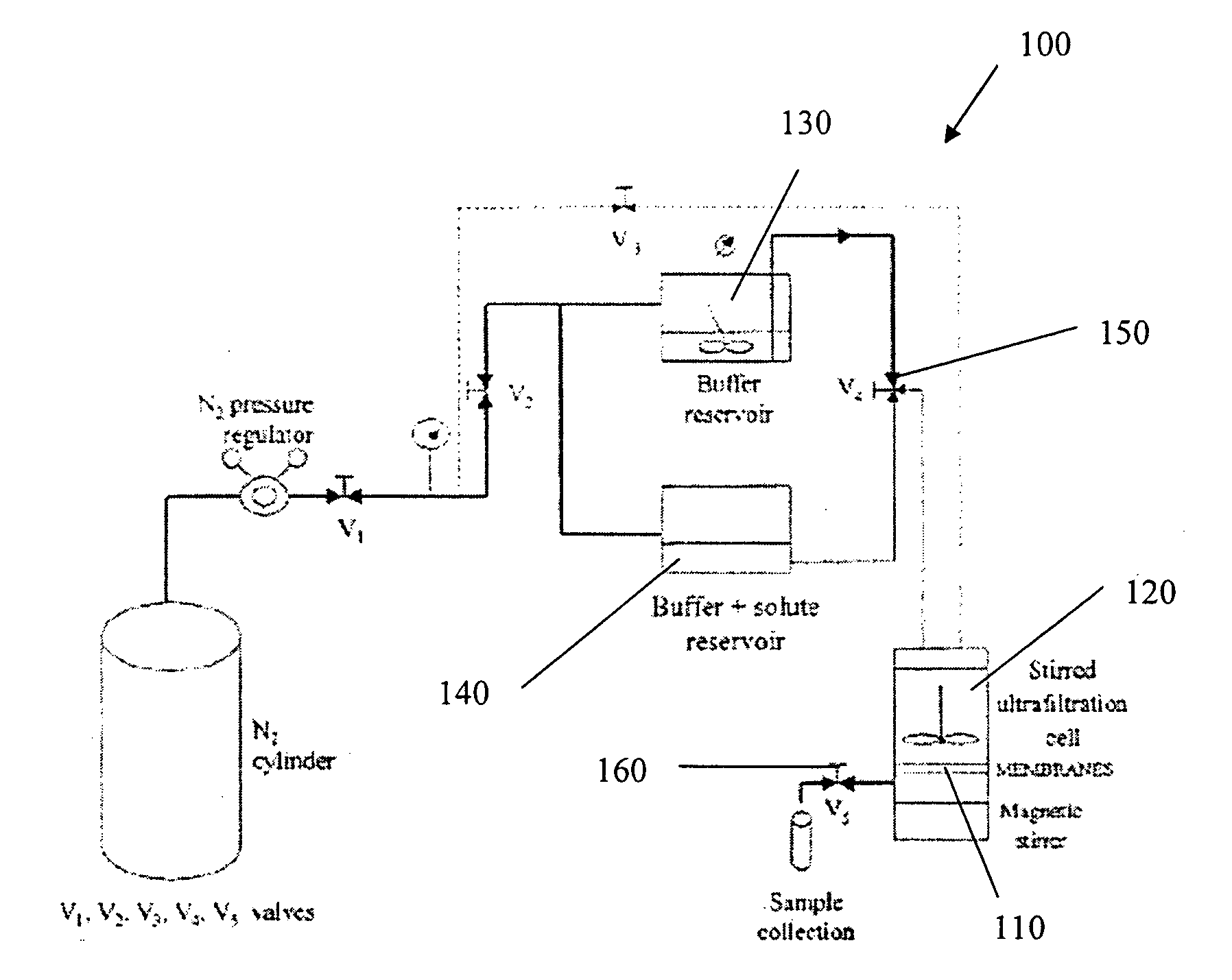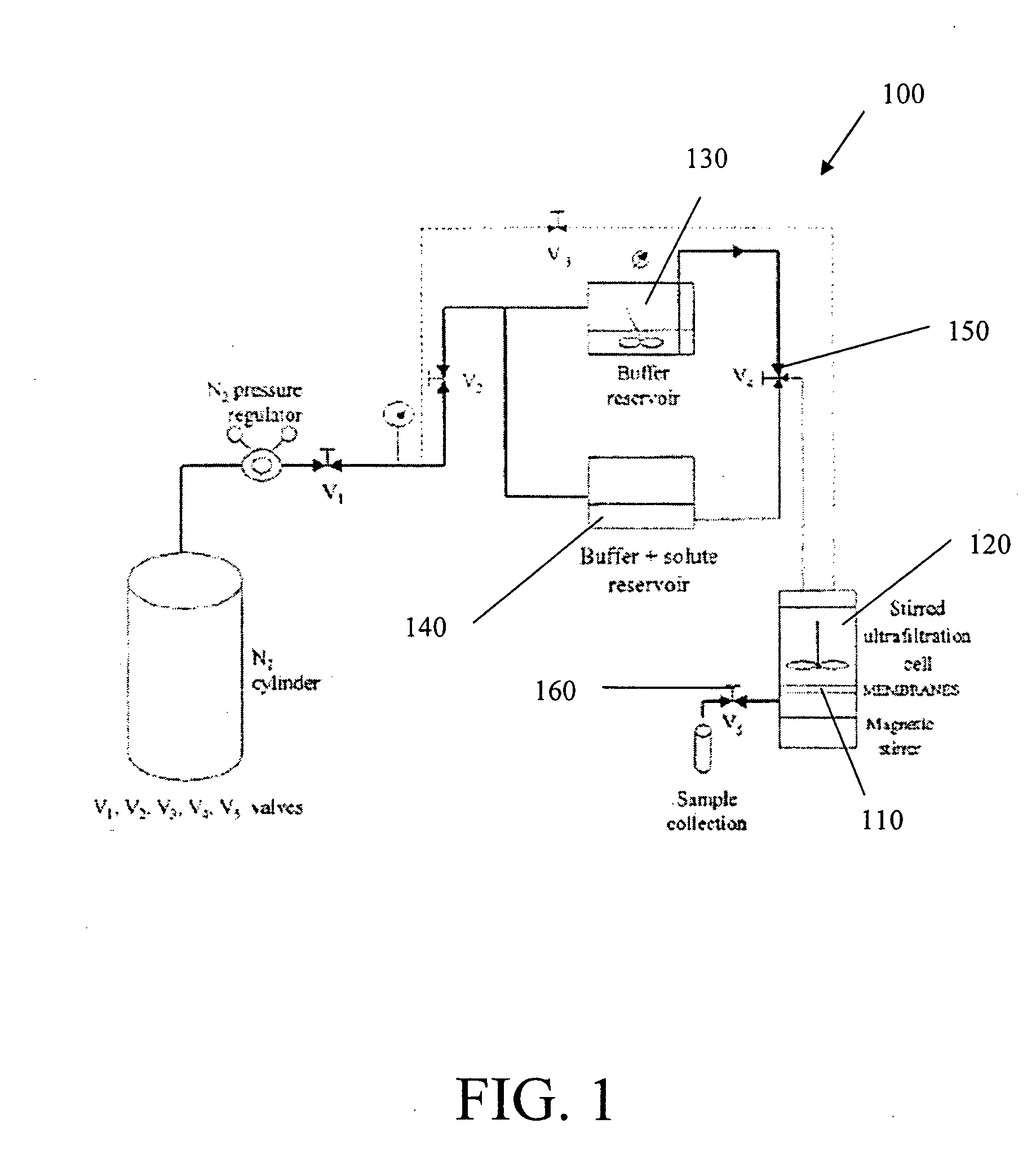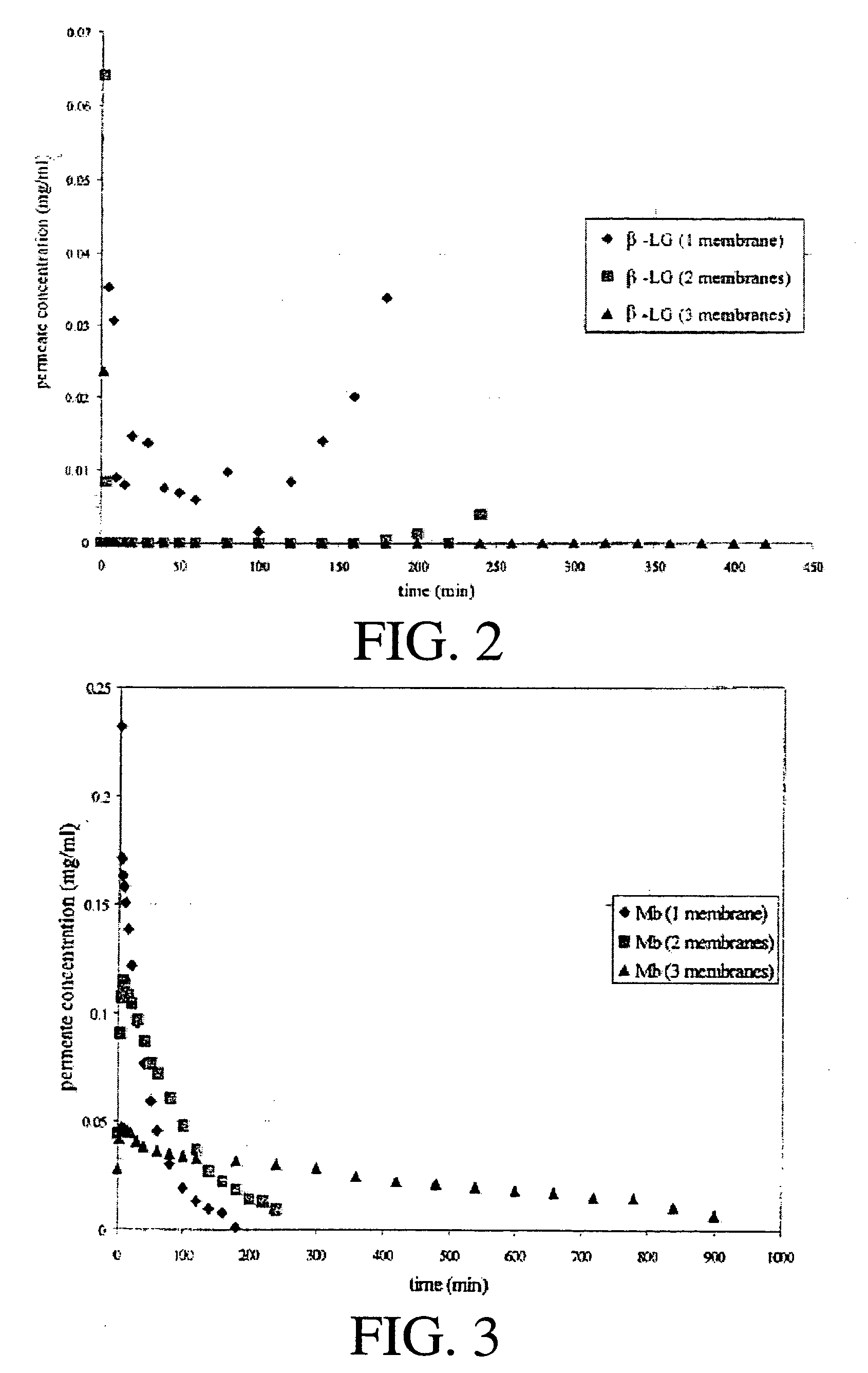Highly selective membrane systems and methods for protein ultrafiltration
a membrane system and ultrafiltration technology, applied in the field of protein ultrafiltration systems and methods, can solve the problems of reducing the solvent flux, the purification level never achieved by chromatography in the conventional uf-based separation of protein mixtures, etc., and achieves the effect of reducing the flux, facilitating cleaning, and improving the selective effect of protein
- Summary
- Abstract
- Description
- Claims
- Application Information
AI Technical Summary
Benefits of technology
Problems solved by technology
Method used
Image
Examples
Embodiment Construction
)
[0051] The present disclosure provides an advantageous system and method to effectively fractionate molecules / biomolecules by stacking flat UF membranes of the same or substantially the same MWCO in series. As used herein, membranes that have substantially the same MWCO generally have MWCOs that differ by no more than about 10 to 20% for membranes having a MWCO of greater than about 50,000. For membranes having a MWCO less than about 50,000, such membranes may be characterized as having substantially the same MWCO if the MWCO of adjacent membranes differ by no more than about 25 to 40%.
[0052] In accordance with observations, experimentally obtained results demonstrate that rejection characteristics observed for a single membrane can be substantially amplified in a multi-membrane stack which, in turn, can result in a pure product in buffer and membrane optimized and non-optimized systems. Further, similarly advantageous results have been observed in batch UF, continuous UF, as well...
PUM
| Property | Measurement | Unit |
|---|---|---|
| pH | aaaaa | aaaaa |
| pH | aaaaa | aaaaa |
| pH | aaaaa | aaaaa |
Abstract
Description
Claims
Application Information
 Login to View More
Login to View More - R&D
- Intellectual Property
- Life Sciences
- Materials
- Tech Scout
- Unparalleled Data Quality
- Higher Quality Content
- 60% Fewer Hallucinations
Browse by: Latest US Patents, China's latest patents, Technical Efficacy Thesaurus, Application Domain, Technology Topic, Popular Technical Reports.
© 2025 PatSnap. All rights reserved.Legal|Privacy policy|Modern Slavery Act Transparency Statement|Sitemap|About US| Contact US: help@patsnap.com



